Wood has been used for centuries as a building material, providing shelter, warmth, and a sense of comfort to people. In recent years, however, the importance of wood in living spaces has been increasingly recognized as more people seek sustainable, natural, and healthy living environments.
1. Wood in Modern Housing Trends
In recent years, there has been a growing trend towards modern housing that emphasizes sustainability, affordability, and a minimalist design. Wood has played a key role in this trend, as it is a versatile, eco-friendly, and durable material that can be used in a variety of ways to create modern and sustainable living spaces.
One of the main benefits of using wood in modern housing is its eco-friendliness. Wood is a renewable resource that can be sustainably harvested, making it a more environmentally friendly alternative to other building materials. Additionally, wood has natural insulating properties, which can help reduce energy consumption and lower heating and cooling costs.
Another benefit of using wood in modern housing is its versatility. Wood can be used in a variety of ways, from flooring and walls to ceilings and furniture. It can be stained or painted to match any decor, and its natural beauty and texture add warmth and character to any living space.
In addition to its eco-friendliness and versatility, wood also provides numerous health benefits when used in modern housing. Studies have shown that exposure to wood can reduce stress and anxiety levels, lower blood pressure and heart rate, and improve indoor air quality by regulating humidity levels. This makes wood an ideal material for creating healthy and tranquil living spaces.
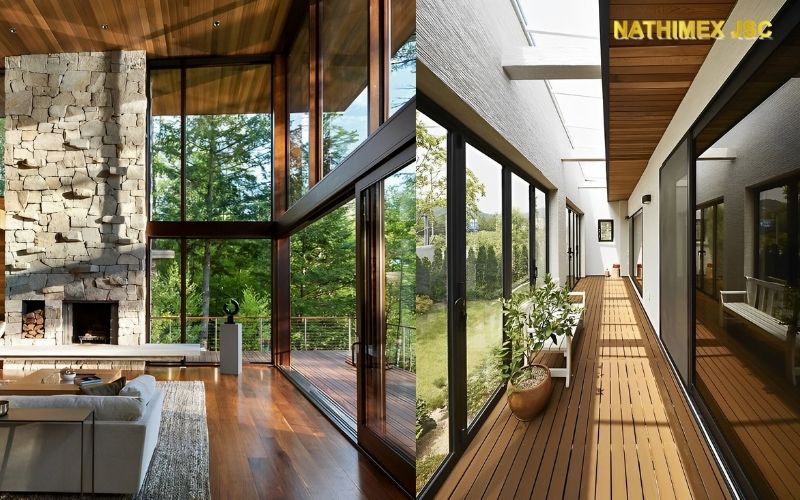
One of the main areas where wood has played a significant role in modern housing trends is in the construction of tiny homes. Tiny homes are becoming increasingly popular due to their affordability, eco-friendliness, and minimalist design. These homes are typically built on a small scale, using sustainable materials such as wood to create efficient and functional living spaces.
Wood is a popular material for constructing the exterior and interior of tiny homes, as it is lightweight, durable, and can be easily transported and assembled on-site. Wood can also be used to create multi-functional furniture and storage solutions, maximizing the use of limited space in tiny homes.
In addition to tiny homes, wood is also being used in the construction of modular homes. Modular homes are becoming increasingly popular due to their affordability, quick construction time, and sustainability. These homes are typically constructed off-site in a factory, using sustainable materials such as wood to create energy-efficient and durable living spaces.
Wood is a popular material for use in the construction of modular homes, as it is easy to transport and assemble on-site, making the construction process quicker and more efficient. Additionally, wood provides excellent insulation and can be used to create stylish and modern designs that appeal to a wide range of homeowners.
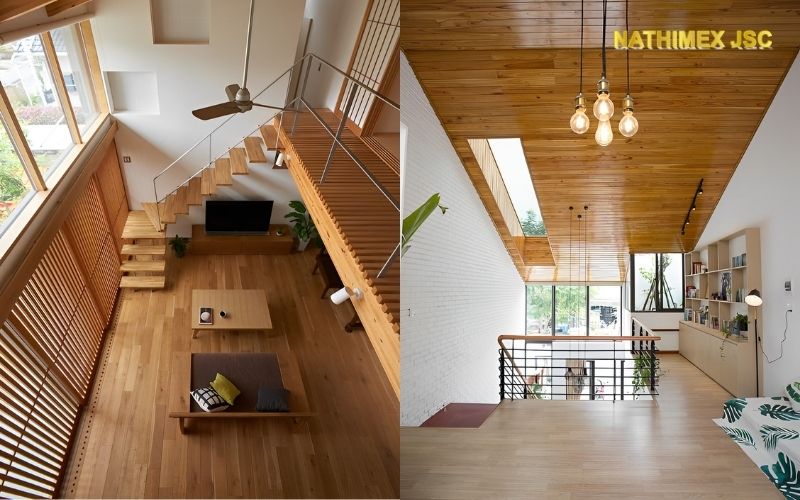
Wood is also being used in the construction of sustainable and eco-friendly homes. These homes are designed to minimize their impact on the environment by using sustainable materials, such as wood, and incorporating features such as solar panels and rainwater harvesting systems.
Wood is an ideal material for use in sustainable homes, as it is renewable, recyclable, and has excellent insulating properties. Additionally, wood is a natural material that blends seamlessly with the surrounding environment, creating a sense of harmony and tranquility in the home.
Wood has numerous benefits as a material for creating living spaces. It is versatile, eco-friendly, and provides numerous health benefits. As a result, wood has become an essential component of modern living spaces.
-
2. Versatility of Wood in Living Spaces
Wood is one of the most versatile and popular materials in construction and interior design. From flooring and furniture to wall paneling and ceilings, wood can be used in a variety of ways to create a warm and inviting living space. Its natural beauty, durability, and flexibility make it a timeless choice that can fit any design style.
Flooring
Wood flooring is a classic and timeless choice for any home. It is durable, easy to clean, and can last for generations. Wood flooring comes in a variety of species, colors, and finishes, making it easy to find the perfect fit for any style. In addition to traditional hardwood flooring, engineered wood flooring has become increasingly popular in recent years. Engineered wood is made of layers of wood veneers glued together, with a hardwood top layer. This makes it more resistant to moisture and changes in temperature than traditional hardwood, making it an ideal choice for basements, kitchens, and bathrooms.
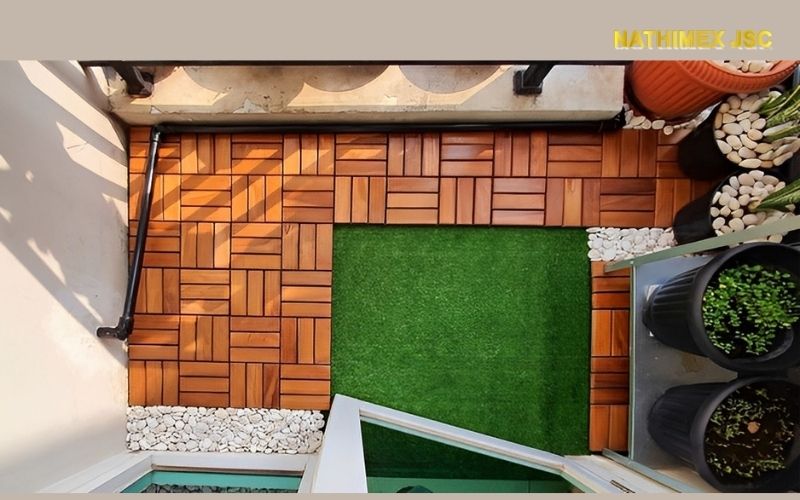
Furniture
Wood furniture is a staple in any living space. From dining tables and chairs to dressers and bookcases, wood furniture can be crafted in a variety of styles and finishes to fit any design aesthetic. The durability and longevity of wood furniture make it a worthwhile investment that can be passed down through generations. In addition to its beauty and durability, wood furniture is also environmentally friendly. Many furniture makers use sustainably sourced wood and employ eco-friendly practices, making it a responsible choice for homeowners who want to reduce their environmental impact.
Wall Paneling and Ceilings
Wood wall paneling and ceilings can add warmth and texture to any living space. Whether it's a rustic cabin or a modern loft, wood paneling and ceilings can create a unique and inviting atmosphere. They can be left natural or stained to match any design aesthetic, making them a versatile choice for any home. In addition to their aesthetic appeal, wood paneling and ceilings also offer practical benefits. They can help regulate temperature and humidity in the home, improving indoor air quality and reducing energy costs.
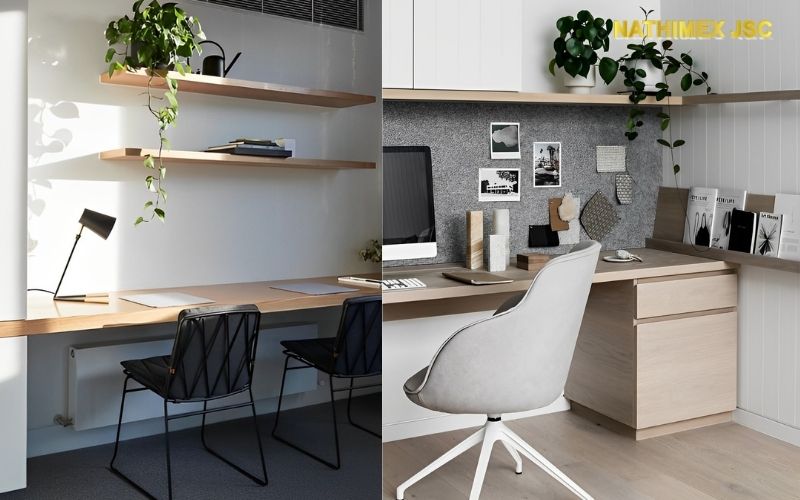
Decorative Accents
Wood can also be used in a variety of decorative accents to add texture and interest to any living space. From wood beams and mantels to wood trim and moldings, these accents can create a sense of depth and warmth in any room. Wood can also be used to create decorative elements such as wall art, sculptures, and decorative bowls. These unique and handcrafted pieces can add a touch of natural beauty to any living space.
Wood is a versatile and timeless material that can be used in a variety of ways to create a warm and inviting living space. From flooring and furniture to wall paneling and decorative accents, wood offers durability, natural beauty, and practical benefits. Its versatility makes it a popular choice for any design aesthetic, from rustic to modern. Whether you are renovating your home or starting from scratch, consider incorporating wood into your living space for a timeless and inviting atmosphere.
-
3. Eco-Friendliness of Wood in Living Spaces
As we become more aware of our impact on the environment, the materials we choose for our living spaces have become increasingly important. Wood, as a natural and renewable material, has gained popularity as an eco-friendly choice for building and decorating homes. Here are some of the ways in which wood can contribute to an eco-friendly living space.
Sustainability
Wood is a renewable resource, as long as it is harvested responsibly. Many manufacturers of wood products use wood from sustainably managed forests. This means that they plant new trees to replace the ones that were harvested, ensuring that the forest remains healthy and viable for years to come. Choosing wood products from sustainable sources can help to reduce the negative impact of deforestation on the environment.
Energy Efficiency
Wood has natural insulating properties, which can help to reduce energy consumption and save money on heating and cooling bills. Wood framing, for example, can help to reduce heat loss in winter and heat gain in summer. In addition, wood products such as flooring, paneling, and ceilings can help to regulate temperature and humidity in the home, improving indoor air quality and reducing energy costs.
Carbon Sequestration
Wood products have the unique ability to sequester carbon, meaning that they remove carbon from the atmosphere and store it in the wood. Trees absorb carbon dioxide from the atmosphere as they grow, and this carbon is stored in the wood. When wood products are used in construction and interior design, they continue to store carbon for the life of the product. This can help to offset the carbon emissions associated with other building materials, such as concrete and steel.

Recyclability
Wood products are recyclable and biodegradable. When wood products reach the end of their useful life, they can be recycled or disposed of in an environmentally responsible manner. Wood can be repurposed into new products, such as mulch or paper, or it can be burned for energy. Unlike plastic and other synthetic materials, wood does not release harmful chemicals when it is burned or buried in a landfill.
Health Benefits
Wood can also contribute to a healthy living space. Unlike synthetic materials, wood does not release harmful chemicals into the air. In fact, some studies have shown that wood can help to improve indoor air quality by reducing the level of indoor pollutants. In addition, wood has been shown to have a calming effect on people, helping to reduce stress and improve overall well-being.
As we become more aware of the impact of our choices on the environment, the importance of eco-friendly materials in our living spaces becomes more apparent. Wood is a renewable and sustainable material that offers a range of benefits, from energy efficiency to carbon sequestration. By choosing wood products from sustainable sources and using them in our homes, we can help to reduce our environmental impact while creating a healthy and inviting living space.
-
4. Health Benefits of Wood in Living Spaces
In detail, wood is a natural material that has been used in construction and interior design for centuries. It has a timeless beauty and a warm, inviting feel that makes it a popular choice for many homeowners. But did you know that wood also has numerous health benefits when used in living spaces? From improving indoor air quality to reducing stress and anxiety, the benefits of wood go beyond its aesthetic appeal.
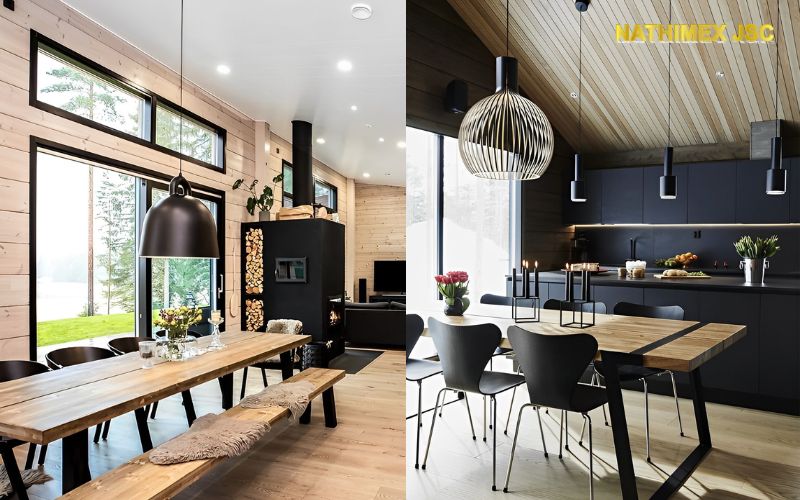
Improved Indoor Air Quality
Indoor air pollution is a significant concern in modern homes, as many synthetic materials used in construction and interior design can release harmful chemicals into the air. Wood, on the other hand, is a natural material that can actually improve indoor air quality. Studies have shown that wood can absorb and release moisture, helping to regulate humidity levels in the home. This can help reduce the risk of mold and mildew growth, which can lead to respiratory problems and allergies.
In addition, wood has natural antibacterial properties, which can help reduce the spread of germs and bacteria in the home. This makes wood an ideal material for use in kitchens and bathrooms, where hygiene is a top priority.
Reduced Stress and Anxiety
The natural beauty of wood can also have a significant impact on our mental health. Research has shown that exposure to natural materials, such as wood, can reduce stress and anxiety levels, lower blood pressure and heart rate, and improve overall well-being.
The warm, inviting feel of wood can create a sense of comfort and tranquility in the home, helping to promote relaxation and reduce stress. This is why wood is often used in spas and other wellness spaces, where creating a calming environment is essential.
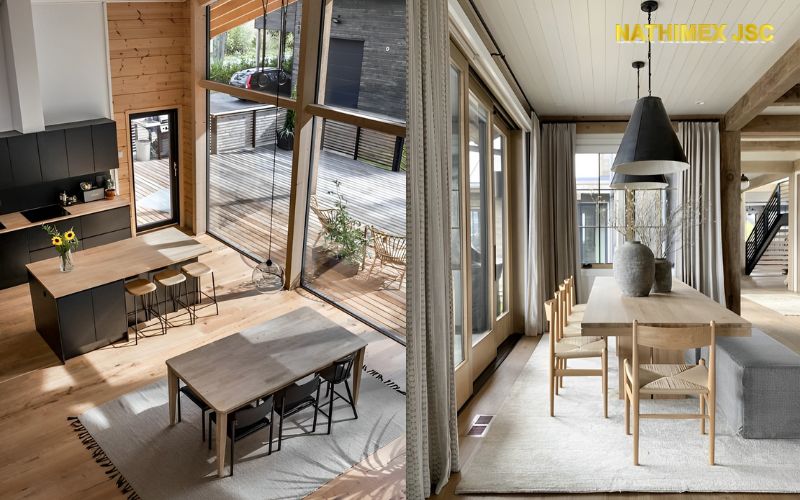
Improved Sleep Quality
In addition to reducing stress and anxiety, wood can also help improve sleep quality. Research has shown that exposure to natural materials, such as wood, can help regulate the body's circadian rhythm, which is essential for a good night's sleep.
The warm, soothing feel of wood can create a sense of calm and relaxation in the bedroom, promoting a peaceful and restful sleep. Additionally, wood has natural insulating properties, which can help regulate temperature and humidity levels in the bedroom, creating a comfortable and healthy sleep environment.
Increased Productivity
The health benefits of wood are not limited to the home. Studies have shown that exposure to natural materials, such as wood, can also have a positive impact on our productivity and performance at work.
The natural beauty and texture of wood can create a sense of warmth and comfort in the workplace, promoting a positive and productive atmosphere. Additionally, wood can help reduce stress and anxiety levels, which can improve focus and concentration.
Eco-Friendly
Again, wood is an eco-friendly material that can help promote sustainability and reduce our carbon footprint. Unlike synthetic materials, wood is renewable and can be sustainably harvested, making it a more environmentally friendly choice for construction and interior design.
In addition, wood can be recycled and repurposed, reducing waste and promoting a circular economy. This makes wood an ideal choice for homeowners who want to create a healthy and sustainable living space.
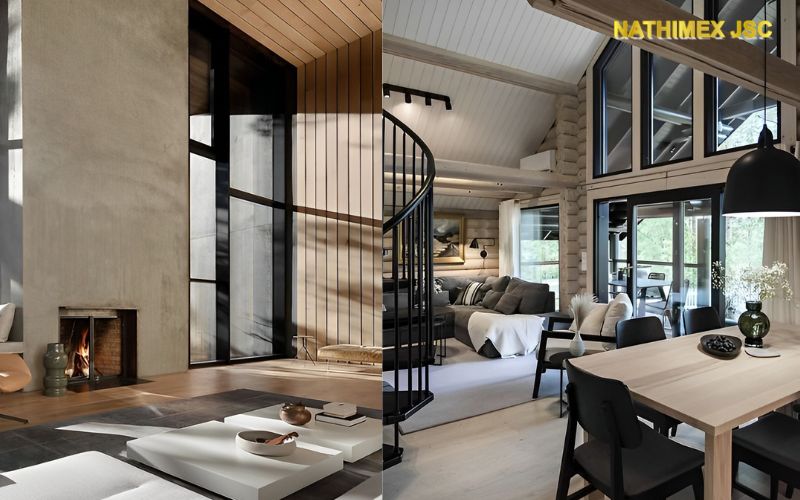
The health benefits of wood in living spaces are numerous and significant. From improving indoor air quality to reducing stress and anxiety, the natural beauty and warmth of wood can have a positive impact on our mental and physical well-being. Whether it is used in construction or interior design, wood is a versatile and eco-friendly material that can help create healthy and sustainable living spaces.
To sum up, wood has numerous benefits as a material for creating living spaces. It is versatile, eco-friendly, and provides numerous health benefits. As a result, wood has become an essential component of modern living spaces.
